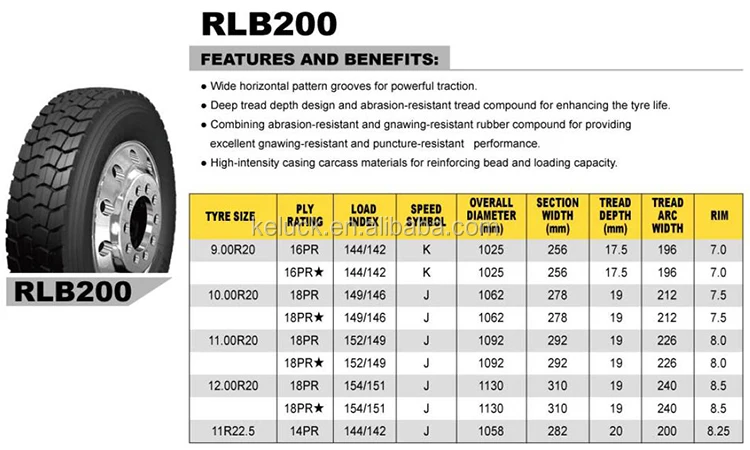Home / Understanding Metric Tire Measurements
Understanding Metric Tire Measurements
| Metric to Imperial tire conversion chart | |||||||
| Metric = | Imperial | Metric = | Imperial | Metric = | Imperial | ||
| 215/75/15 | 27.7"x 8.5" | 245/75/16 | 30.5"x 9.6" | 315/70/17 | 34. |
||
| 225/70/15 | 27.4"x 8.9" | 255/70/16 | 30.0"x 10.0" | 275/65/18 | 32.1"x 11.0" | ||
| 225/75/15 | 28.3"x 8.9" | 265/70/16 | 30.6"x 10.4" | 375/50/18 | 33.0"x 15.4" | ||
| 235/75/15 | 29.0"x 9.3" | 265/75/16 | 31.6"x 10.4" | 325/60/18 | 33.2"x 13.3" | ||
| 245/75/15 | 29.5"x 9.6" | 275/70/16 | 31.2"x 10.8" | 325/65/18 | 34.8"x 13.5" |
||
| 255/75/15 | 30.0"x 10.0" | 285/75/16 | 32. 8"x 11.2" 8"x 11.2" |
305/70/18 | 35.0"x 12.2" | ||
| 265/75/15 | 30.6"x 10.4" | 295/75/16 | 33.4"x 11.6" | 375/60/18 | 35.7"x 15.5" | ||
| 205/85/16 | 29.7"x 8.1" | 305/70/16 | 33.0"x 12.2" | 395/65/18 | 37.8"x 15.7" | ||
| 215/75/16 | 28.7"x 8.5" | 315/75/16 | 34.8"x 12.9" |
325/50/20 | 33.0"x 13.2" | ||
| 225/70/16 | 28.4"x 8.9" | 375/55/16 | 32.8"x 15.5" | ||||
| 225/75/16 | 29.2"x 8.9" | 395/70/16 | 37.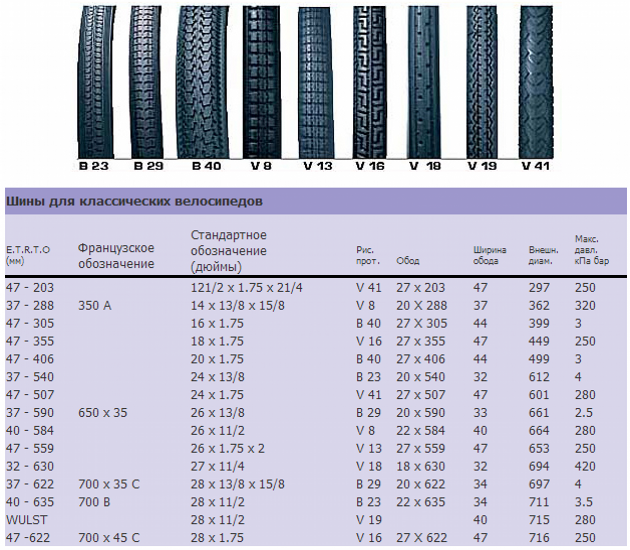 9"x 16.0" 9"x 16.0" |
||||
| 235/70/16 | 29.0"x 9.3" | 245/70/17 | 30.6"x 9.8" | ||||
| 235/85/16 | 31.7"x 9.3" | 265/70/17 | 31.6"x 10.7" | ||||
| 245/70/16 | 29.5"x 9.6" | 285/70/17 | 33.0"x 11.5" |
||||
Example: 225/70R15
| 225 | = Section width in millimeters |
| 70 | = Aspect ratio (ratio of section height to section width) |
| 15 | = Rim diameter |
| R | = Radial Construction B = Bias Construction D = Bias Belted Construction |
To calculate:
| Tire Width: | Section width divided by 25.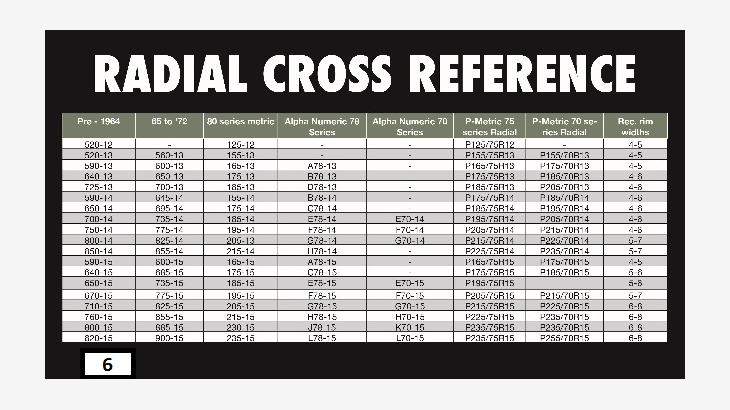 4 (Ex: 225 / 25.4 = 8.86") 4 (Ex: 225 / 25.4 = 8.86") |
| Section Height: | Tire width times aspect ratio (Ex: 8.86" x 70% = 6.20") |
| Overall Diameter: | Section height times 2 plus rim diameter (Ex: (6.20" x 2) + 15 = 27.40") |
Home > Company > Tire Safety > Choosing Tires > Determining Tire Size
Once you have determined it’s time to buy tires, you’ll need to know what size tires are correct for your vehicle. Depending on what you drive, you may be interested in how to find the right tire for your…
This information is usually inside your car’s doorjamb, in your owner’s manual. To ensure your current tire or a replacement tire you may be looking at matches your vehicle’s requirements, it will be good for you to understand how tire sizing works. You may have never paid attention to the string of numbers and letters on every tire, but it’s a gold mine of information.
To ensure your current tire or a replacement tire you may be looking at matches your vehicle’s requirements, it will be good for you to understand how tire sizing works. You may have never paid attention to the string of numbers and letters on every tire, but it’s a gold mine of information.
If you’re unsure of how to read tire measurements from your tire walls, the information and graphics below will tell you how to read tire size, understand and interpret it. If you decide you want to substitute a new size or tire type, consult an authorized tire retailer who can expertly advise you, because many optional tire sizes may have different load capacities and could require wheels of a different rim width or diameter and different inflation pressure.
Not sure you need new tires? Our Tire Replacement Guidance article will help you determine whether it’s time to retire your tires.
Most passenger cars, SUVs and light pickups (1/2 ton and smaller) will come with tires that are either P-Metric or Euro-Metric.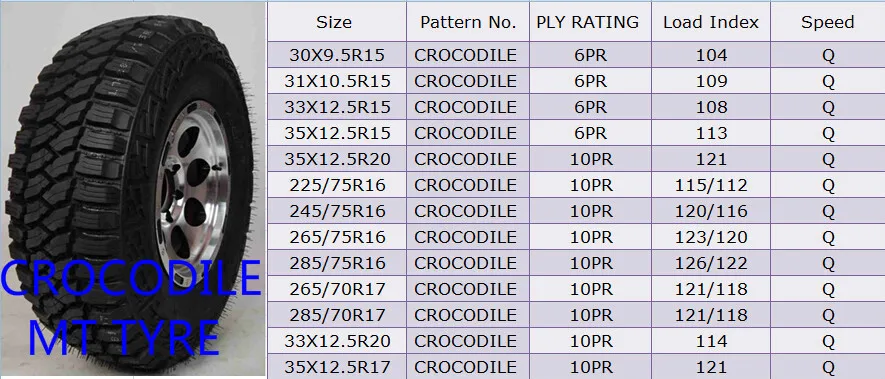 For P-Metric tires, you’ll see the letter “P” before the number sequence begins: P225/70R16 97H. P-metric is a designation standardized by the Tire and Rim Association for a “passenger car” tire type. For Euro-Metric there will be no preceding letter before the number sequence begins: 225/70R16 98H. Euro-Metric is a designation standardized by the European Tyre and Rim Technical Organization for a “passenger car” tire type. Both P-Metric and Euro-Metric size tires are designed to primarily be used on passenger vehicles, which can include cars, minivans, SUVs, and other light duty pickup trucks.
For P-Metric tires, you’ll see the letter “P” before the number sequence begins: P225/70R16 97H. P-metric is a designation standardized by the Tire and Rim Association for a “passenger car” tire type. For Euro-Metric there will be no preceding letter before the number sequence begins: 225/70R16 98H. Euro-Metric is a designation standardized by the European Tyre and Rim Technical Organization for a “passenger car” tire type. Both P-Metric and Euro-Metric size tires are designed to primarily be used on passenger vehicles, which can include cars, minivans, SUVs, and other light duty pickup trucks.
If your vehicle is an SUV, Pickup truck or van, you might see a different type of size designation on your placard that is specific for heavy duty light trucks and vans, especially common on ¾ ton and larger pickup trucks and vans. There are two common size types in this category, LT-Metric and Euro-Metric Commercial (aka C-type). Both size types are metric and so use the same structure as P-Metric and Euro-Metric but have some different characters in the size that differentiate them from their passenger car cousins. LT-Metric tires will have the letters “LT” before the size number sequence: LT245/75R17 119/116R Load Range E. Notice that there are two load index numbers and a Load Range, see the section on Load Index for more info. LT-Metric is a designation standardized by the Tire and Rim Association for a “light truck” type tire. Euro-Metric Commercial or C-Type tires will look very similar to a passenger Euro-Metric size except that there will be a “C” right after the rim size: 23/65R16C 121/119R. Notice that the C-type tires also have two load index numbers. Euro-Metric Commercial, or C-Type is a designation standardized by the European Tyre and Rim Technical Organization for a light truck type tire. Light truck tires are designed to be used on vehicles capable of carrying heavy cargo and are usually only specified by a vehicle manufacturer on vehicles exceeding a certain load capacity.
LT-Metric tires will have the letters “LT” before the size number sequence: LT245/75R17 119/116R Load Range E. Notice that there are two load index numbers and a Load Range, see the section on Load Index for more info. LT-Metric is a designation standardized by the Tire and Rim Association for a “light truck” type tire. Euro-Metric Commercial or C-Type tires will look very similar to a passenger Euro-Metric size except that there will be a “C” right after the rim size: 23/65R16C 121/119R. Notice that the C-type tires also have two load index numbers. Euro-Metric Commercial, or C-Type is a designation standardized by the European Tyre and Rim Technical Organization for a light truck type tire. Light truck tires are designed to be used on vehicles capable of carrying heavy cargo and are usually only specified by a vehicle manufacturer on vehicles exceeding a certain load capacity.
Other types of tires that fall into the Metric sizing type are Temporary Spares, they start with “T”.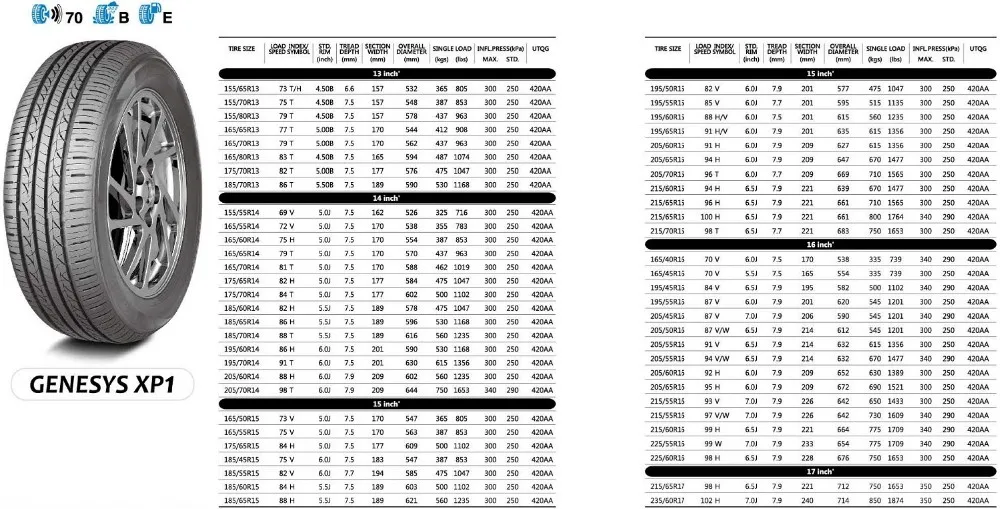 If you see a size that starts with “ST,” that means “special trailer” and is only for use on a trailer.
If you see a size that starts with “ST,” that means “special trailer” and is only for use on a trailer.
Regardless of whether you are looking at a P-Metric, Euro-Metric, LT-Metric, Euro-Metric Commercial, T or ST tire the numbers in the size mean the same thing.
The first number to appear in your tire size information is the width, in millimeters, of the correct tires for your vehicle: P225/70R16 91S.
Tire width always refers to the measurement from one sidewall to another. Thus, a tire with the measurement “P225” is for a passenger vehicle and has a nominal width of 225 millimeters.
After the slash mark, the next number you see is for the tire’s aspect ratio, which essentially tells you how tall your tire’s profile is: P225/70R16 91S. Aspect ratios are delivered in percentages. Tire makers calculate the aspect ratio by dividing a tire’s height off the rim by its width. If a tire has an aspect ratio of 70, it means the tire’s height is 70% of its width.
If a tire has an aspect ratio of 70, it means the tire’s height is 70% of its width.
Lower aspect ratio tires, such as a 60 series, generally offer vehicle handling performance advantages over higher aspect ratio tires, such as a 75 series, but a typical trade off can be ride harshness.
After the aspect ratio comes a letter that indicates the type of internal construction maintaining your tire’s stability: P225/70R16 91S.
There are two types of construction that you may see on the sidewall of a tire:
Radial tires are the most common tires on the road in the United States today; thus “R” will usually be shown in the tire size designation. Radial construction means the tire’s internal ply cords are oriented in a radial direction, from one bead over to the other, essentially perpendicular to the direction of rotation.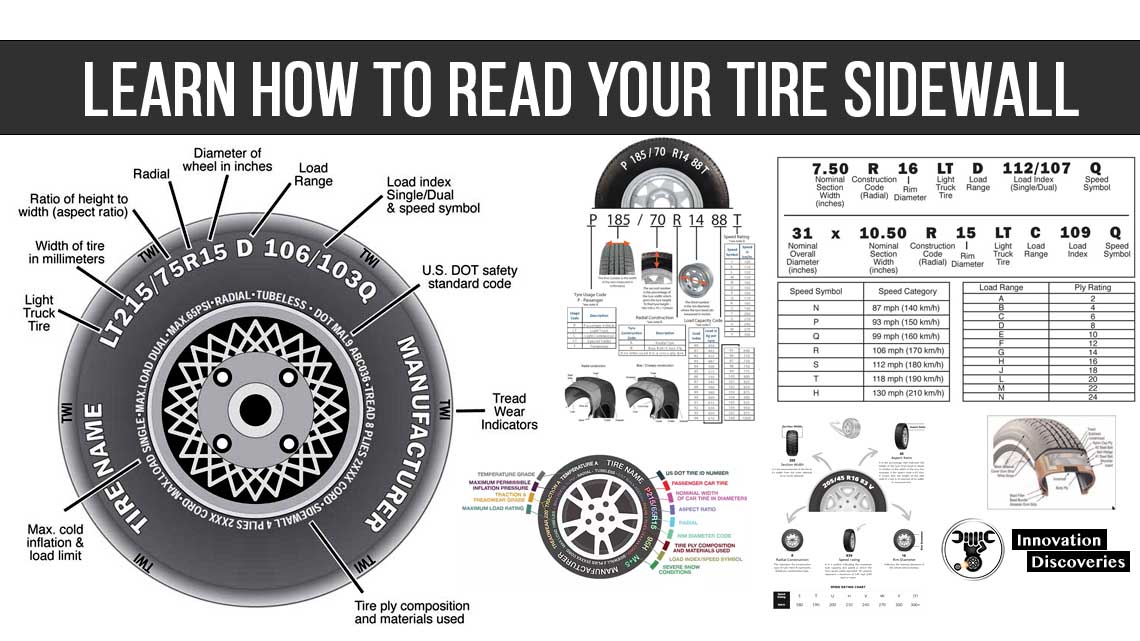 You may also occasionally see RF indicating a run flat tire or ZR indicating a tire that is a speed rating higher than V.
You may also occasionally see RF indicating a run flat tire or ZR indicating a tire that is a speed rating higher than V.
The next number is the diameter code, in inches, of the rim onto which the tire can be mounted. For example, a tire with the P225/70R16 91S would fit a rim with a 16-inch diameter.
Load index can be a confusing subject because there are so many different caveats, but we will try to explain everything here.
The next figure after the rim size in the sequence is your tire’s load index, which tells us how much weight, in pounds, the tire can support when fully inflated: P225/70R16 91S
We call it the load “index” because the number doesn’t tell us the precise number of pounds the tire can carry, at least not by itself. However, the number does correspond to a specific load capacity listed in an index. Beginning with 1 and ending with 150, numbers in the load index represent carrying capacities of 99 to 7385 lbs.
Beginning with 1 and ending with 150, numbers in the load index represent carrying capacities of 99 to 7385 lbs.
There are two types of load types for passenger tires though, Standard Load and Extra Load. If a tire is Standard Load there will be no markings indicating it but if it is Extra Load the letters XL will appear after the size and load index.
Standard Load Euro-Metric: 215/55R17 94V
Extra Load Euro-Metric: 215/55R17 98V XL
Passenger car tires like P-Metric and Euro-Metric will only have one load index number where LT-Metric and Euro-Metric Commercial (C-Type) will have two numbers separated by a slash. The first number is the load index if the tire is used in a single application, the second number is the load index if the tire is used in a dual application. Passenger type tires cannot be used in a dual application. Light truck tires will also have a Load Range that is indicated by a letter, such as Load Range E. Load Range is an older term that is still commonly used in the industry so you may hear your tire dealer reference it but the load index numbers are the best way to ensure you have the proper tire.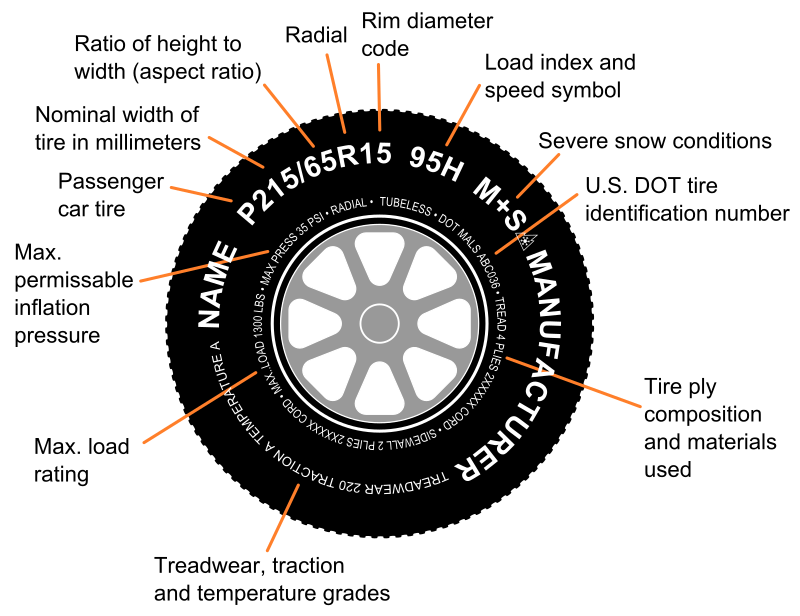
One important but often misunderstood facet about load index is that the load index numbers between standards organizations (P-Metric vs Euro-Metric) are not necessarily on the same scale. Meaning that two tires in the two different systems that have the same load index number could have different maximum load capacities. This is why it’s important to not only look at the load index number but also verify the actual load capacity.
The final figure in a tire size sequence is the speed rating, which is indicated by a letter: P225/70R16 91S. Just as your load index number corresponds to a specific load, your speed rating letter corresponds to a particular speed capability based on a standardized laboratory test.
For example, a tire with speed rating “S” is rated for up to 112 mph, while a tire rated “R” is up to 106 mph. Remember that this isn’t a recommended cruising speed. Of course, you should always follow legal speed limits on roadways.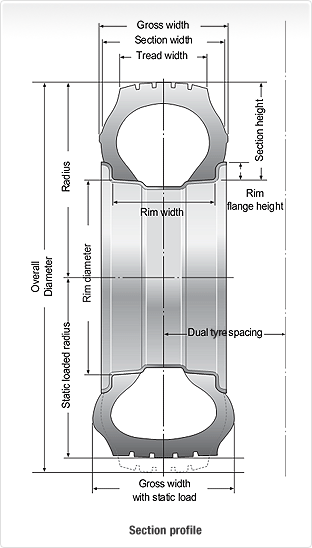
Replacement tires must have the same or higher speed rating as the vehicle’s Original Equipment to maintain vehicle speed capability. If a vehicle has tires with different speed ratings, it is the speed rating of the “slowest” tire that dictates the vehicle top speed.
There is one last sizing type that you should know about, especially if you are in the market for off road tires for a light truck or SUV. It’s called a Flotation size and the numbers in this sizing format are very different from the Metric formats. Flotation sized tires are similar to LT-Metric tires in application except for a few important points. Number one, they cannot be used in dual applications and number two, an equivalent size tire may have different load capacity than its LT-Metric counterpart.
The first number in the Flotation tire size is the overall diameter in inches. Pretty straight forward.
Pretty straight forward.
The second number is the section width (sidewall to sidewall) measurement in inches. Again, fairly simple.
After the section width comes a letter that indicates the type of internal construction: 33X12.50R17LT 120Q.
This is the same as is found in the metric sizing systems.
There are two types of construction that you may see on the sidewall of a tire:
Radial tires are the most common tires on the road in the United States today; thus “R” will usually be shown in the tire size designation. Radial construction means the tire’s internal ply cords are oriented in a radial direction, from one bead over to the other, essentially perpendicular to the direction of rotation.
The next number is the diameter code, in inches, of the rim onto which the tire can be mounted. For example, a tire with the 33X12.50R17LT 120Q would fit a rim with a 17-inch diameter.
For example, a tire with the 33X12.50R17LT 120Q would fit a rim with a 17-inch diameter.
The letters LT will be after the Rim Diameter indicating that this tire type is intended for Light Truck vehicles similar to the LT-Metric and Euro-Metric Commercial (C-Type) tires.
Load Index and Speed Rating have the same meaning and format as the tires using the metric sizing system. Note that since flotation tires cannot be used in a dual application there will be only one load index number instead of two.
Another group of stamping on certain types of tires is the Uniform Tire Quality Grading or UTQG. This grading and stamping is required for passenger car tires (i.e. P-metric and Euro-metric) in the all season and summer categories. Dedicated winter tires, Light Truck (LT-Metric, Euro-Metric Commercial, Flotation) and Motorcycle tires are excluded from this requirement.
Dedicated winter tires, Light Truck (LT-Metric, Euro-Metric Commercial, Flotation) and Motorcycle tires are excluded from this requirement.
Quality grading is designed to make the tire purchase decision easier for you. Ideally, the system is intended to provide simple, comparative data so you can make an intelligent buying decision. However, the ratings are based upon test results achieved under special conditions. This means it’s possible to misinterpret the comparative data as it relates to your individual driving habits, conditions, etc. You should still rely on your service or tire professional for assistance.
Quality grading designates the comparative performance levels of a tire based on government-specified tests but commissioned by the individual tire manufacturers. All tire manufacturers are required to grade regular and all-season passenger tires in three categories:
UTQG
Treadwear
The treadwear grade is a comparative rating based on the wear rate of the tire when tested under controlled conditions on a specified government test course for 6,000 miles (9,600 km).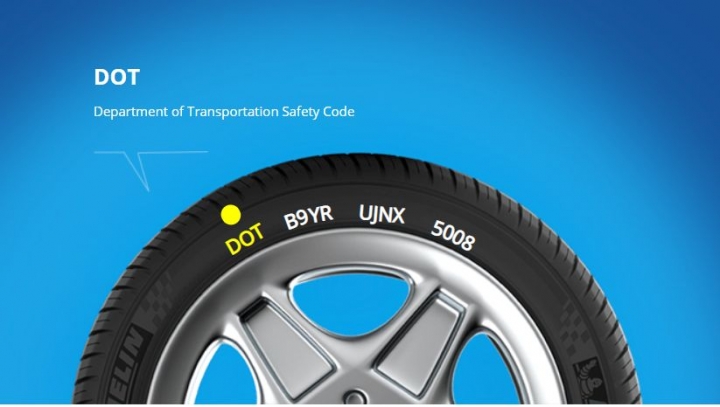 For example, a tire graded 150 would wear one and a half times as well on the government course as a tire graded 100. However actual tire performance depends on driving habits, road characteristics, service practices, and other factors that can influence the outcome.
For example, a tire graded 150 would wear one and a half times as well on the government course as a tire graded 100. However actual tire performance depends on driving habits, road characteristics, service practices, and other factors that can influence the outcome.
Traction Grades AA, A, B and C
The traction grades from highest to lowest are AA (the highest), A, B and C. They represent how well tires stop on wet pavement as measured under controlled conditions on specified government test surfaces of asphalt and concrete. C-rated tires will have the lowest traction performance.
WARNING: THE TRACTION GRADE ASSIGNED IS BASED ON A WET BRAKING (STRAIGHT AHEAD) TRACTION TEST AND DOES NOT INCLUDE CORNERING (TURNING) TRACTION.
Temperature Grades A, B and C
The temperature grades A, B, and C represent the tire's resistance to the generation of heat and its ability to dissipate heat when tested under controlled conditions on a specified indoor laboratory test wheel.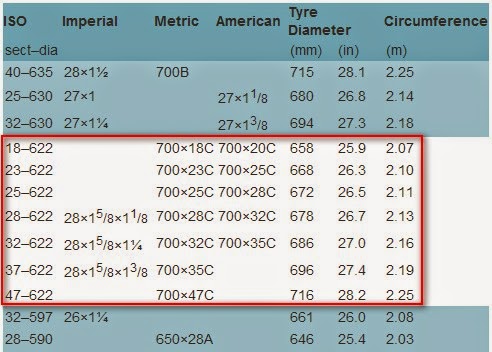 Sustained high temperature can cause the tire’s material to degenerate and reduce tire life, and excessive temperature can lead to sudden tire failure. The grade C corresponds to a performance level all passenger car tires must meet under the Federal Motor Vehicle Safety Standard No. 109. Grades A and B represent higher levels of performance on the laboratory test wheel than the minimum required by law.
Sustained high temperature can cause the tire’s material to degenerate and reduce tire life, and excessive temperature can lead to sudden tire failure. The grade C corresponds to a performance level all passenger car tires must meet under the Federal Motor Vehicle Safety Standard No. 109. Grades A and B represent higher levels of performance on the laboratory test wheel than the minimum required by law.
WARNING: THE TEMPERATURE GRADE IS ESTABLISHED FOR A TIRE THAT IS PROPERLY INFLATED AND NOT OVERLOADED. EXCESSIVE SPEED, UNDER INFLATION, OR EXCESSIVE LOADING, EITHER SEPARATELY OR IN COMBINATION, CAN CAUSE HEAT BUILDUP AND POSSIBLE TIRE FAILURE.
DOT Quality Grades
All passenger car tires must conform to other federal requirements in addition to these grades.
Learn about our mission, our achievements, and our ongoing commitments
Read Our Origin Story
European designations.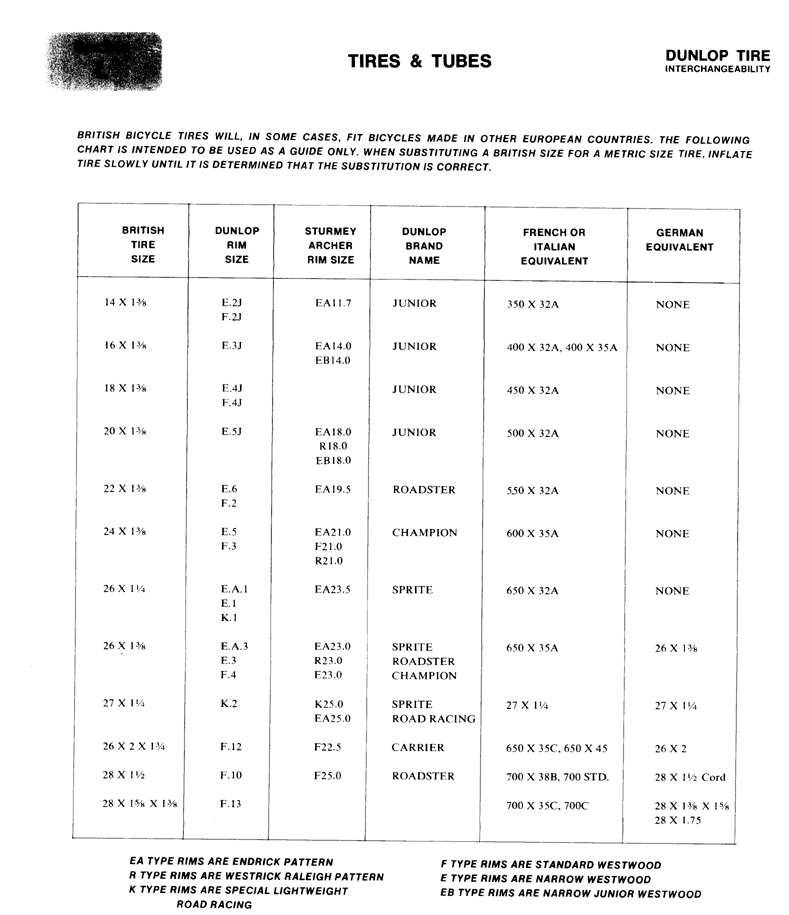 Therefore, drivers constantly have to convert inches to millimeters or centimeters. Only by making such calculations, you can choose the right wheel for your car.
Therefore, drivers constantly have to convert inches to millimeters or centimeters. Only by making such calculations, you can choose the right wheel for your car.
Contents
The Russian SUV is produced with wheels, the diameter of which is slightly smaller than that of a conventional SUV. The standard size of foreign cars is 29 inches or 235/75R15.
Domestic SUV (Niva) is factory-equipped with 175/80R15 wheels. On such tires, the car quickly burrows into the mud, hardly moves along our impassability.
To remedy this situation, it is necessary to install 29 inch tires. It will increase the clearance by 25 mm. If you install tires 31 inches, the ground clearance will increase by 50 mm. To install such wheels, you only need to change the wheel arches. It will be necessary to increase their dimensions.
Most Jeeps use tires marked 31x10.5R15.
31 here refers to the inch diameter of the wheel. One inch, as you know, corresponds to two and a half centimeters, and to be completely accurate, then 2.54 cm. In other words, after the transfer, D will become equal to 78.7 cm.
This marking is quite in demand, because it is convenient, as it shows the size of the wheel with the disk parameters already taken into account.
The wheel diameter 31x10.5R15 is almost equal in dimensions to the tire with the designation 31x10.5R16. The only difference will be a reduction in tire profile by 2.5 cm.
10.5 - tire width in inches. But this value is not entirely accurate, because when converted from inches to traditional centimeters, it will turn out to be 26.5 cm.
However, when measuring this value with a regular ruler, the value will fluctuate within 23 cm. it will be possible to talk about a width of 26.5 cm.
You should always remember this nuance if you decide to install the maximum tire size in the arch of an SUV.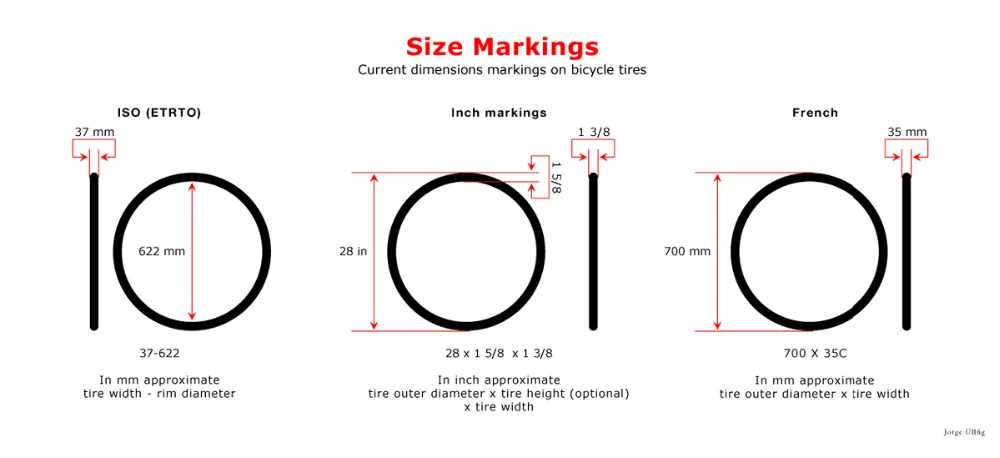
This measurement system is much more difficult to use. Take rubber marked 265-75-15.
265 mm - tire width. Just like in the inch system, its actual width will be approximately 230-235 mm.
75 - profile height in millimeters. To get the true value, you need to take 75% of 265 mm. It will be 198.75 mm. This number is then multiplied by two. This is because the total wheel diameter is D of the rim plus twice the profile height.
In our case, it is 15 inches. As a result, after the calculations, we get a D disk of 381 mm. Total wheel D: 397.5 + 381 = 778 mm or 77.8 centimeters.
R15 - radial rubber. Disc diameter is in inches. Always a surprise. Why is the inch designation left in the metric system.
If you look closely at these two systems, you will notice a slight difference, about 1.1 centimeters. It does not affect the design and installation of the wheels in any way.
Today, a large number of various calculators are offered on the Internet for the correct calculation of tire size. All of them work completely free of charge and make it much easier to find the right tire size.
All of them work completely free of charge and make it much easier to find the right tire size.
You can get acquainted with the rating of summer tires 2019 on our website
We have compiled a table of the most common sizes, perhaps it will help you quickly find the right wheel size.
| Key | Дюймы |
| 235/65R16 | 28,0 |
| 235/75R15 | 28,9 |
| 225/75R16 | 29,3 |
| 245/70R16 | 29.5 |
| 285/60R16 | 29.5 |
| 225/85R15 | |
| 245/75r16 | 305 |
| 265/70R16 | 30,6 |
| 305/60R17 | 31,4 |
| 265/70R17 | 31,6 |
| 265/75R16 | 31,6 |
| 235 /85R16 | 31,7 |
| 285/70R16 | 31,7 |
| 285/70R17 | 32,7 |
| 285/75R16 | 32,8 |
| 305/70R16 | 32.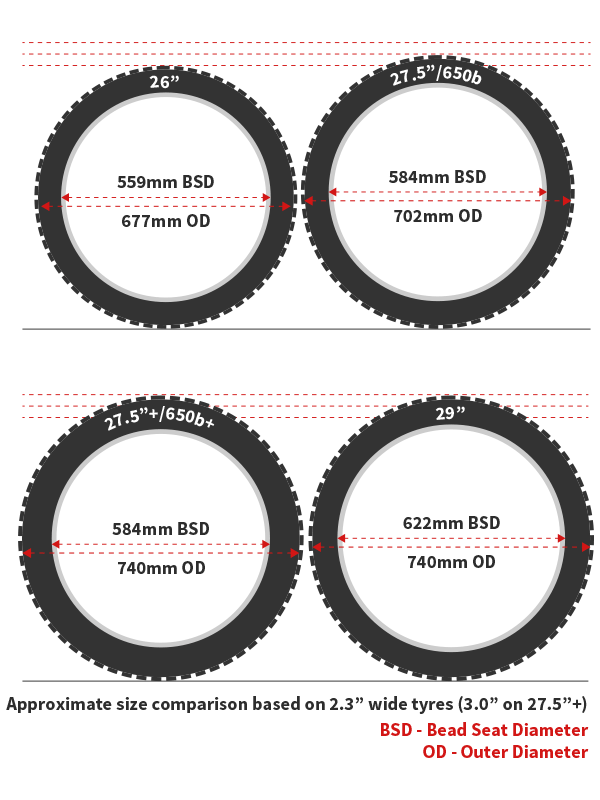 8 8 |
| 255/85R16 | 33.1 |
| 305/75r16 | 34.0 |
You can familiarize yourself with the 2019 summer tire rating on our website
9000 your tire in millimeters if the size is in inches.
Interesting the fact that the diameter of motorcycle tires (unlike bicycle tires) is still calculated in inches, but the width and height of the puff itself is now more often you will meet with a designation in the metric coordinate system and is designated it is in millimeters.
Everything is very simple to give an example, for example, if 4.6H18 (or just 4.6) is indicated, then the tire in millimeters will be: we counted with only one decimal place, but this is not so important because we can choose the tire itself in a certain range. That is, tires with a width of 110 and 120 mm are suitable for us, depending on conditions of use of our motorcycle dirt, dirt, asphalt, mixed type.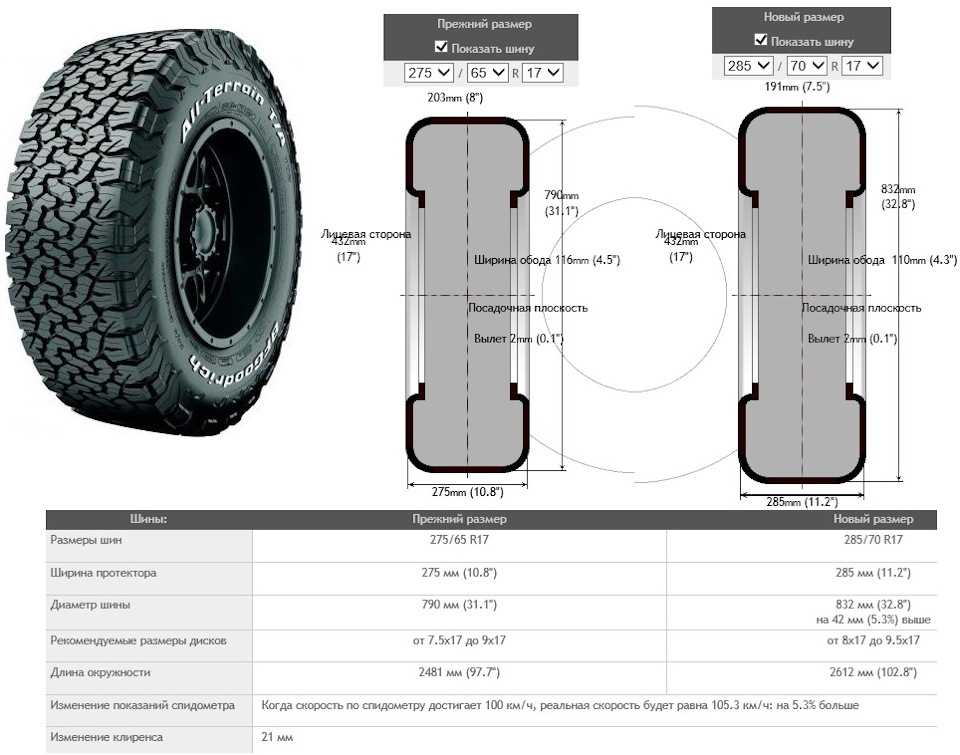 We haven't finished counting our tire yet because in metric the coordinate system also indicates the height of the tire itself as a percentage in relation to width, for example, tires can have such values \u200b\u200bof 110/90 or 120/80 or 120/90. This says that for example a 110/90 tire will 110mm wide and 110 high x 90% = 99mm, and a 120/80 tire would be width 120mm and height 120 X 80% = 96mm.
We haven't finished counting our tire yet because in metric the coordinate system also indicates the height of the tire itself as a percentage in relation to width, for example, tires can have such values \u200b\u200bof 110/90 or 120/80 or 120/90. This says that for example a 110/90 tire will 110mm wide and 110 high x 90% = 99mm, and a 120/80 tire would be width 120mm and height 120 X 80% = 96mm.
Show also how much will be the diameter of the tire in millimeters for this you need 18 inches of our tire also multiply by 25.4 and as a result we get approximately 457mm is the diameter of our wheel without a tire.
Well, now an approximate table for converting tire designations from inches to the metric system.
Tire size Index permissible tire size
in inches loading capacity of rim
alphanumeric metric
Standard reinforced 100 90 80
2.75-16 46 46 1.56-1.85 mH 90-16 80/100-16 80/90-16 90/80-16
3.00-16 48 48 1.60-2.15 mH 90-16 90/100-16 90/90-16 100/80-16
3. 25-16 48 55 1.85-2.50 mJ 90-16 100 /100-16 100/90-16 110/80-16
25-16 48 55 1.85-2.50 mJ 90-16 100 /100-16 100/90-16 110/80-16
3.50-16 58 58 1.85-2.50 Ml 90-16 100/100-16 100/90-16 110/80-16
4.60-16 59 1.85- 3.00 MM 90-16 100/100-16 110/90-16 120/80-16
2.75-17 41 47 1.50-1.85 mH 90-17 80/100-17 80/90-17 90/80-17
3.00-17 41 50 1.60-2.15 MH 90-17 90/100-17 90/90/90/90/90 -17 100/80-17
4.50-17 50 67 2.15-3.00 MR 90-17 110/100-17 110/90-17 120/80-17
4.60-17 50 62 1.85-3.00 ms 90-17 100/ 100-17 130/90-17 140/80-17
5.10-17 50 67 2.50-3.50 MT 90-17 110/100-17 130/90-17 140/80-17
2.75-18 48 1.50-1.85 mH 90-18 80/100-18 80/90-18 90/80-18
3.00-18 47 52 1.60-2.15 MH 90-18 90/100-18 90/90-18 100/80-18
3.25-18 59 59 1.85 -2.50 MJ90 -18 100/100-18 90/90-18 110/80-18
3.50-18 56 62 1.85-2.50 Ml 90-18 100/100-18 100/90-18 110/80-18
3.60-1 51 62 1.85-2.50 mH 90-18 100/100-18 100/90-18 100/80-18
4.00-18 64 69 2.15-3.00 Mn 90-18 110/100-18 100/90-18 110/80 -18
4.10-18 60 69 1. 85-3.00 ML 90-18 100/100-18 110/90-18 120/80-18
85-3.00 ML 90-18 100/100-18 110/90-18 120/80-18
4.25-18 64 69 1.85-3.00 mm 90-18 110/100-18 120/90-18 130/80-18
4.85-18 69 69 2.15-3.00 ml 90-18 110 110 110 /100-18 120/90-18 130/80-18
4.60-18 69 69 1.85-3.00 MR 90-18 110/100-18 120/90-18 130/80-18
3.00-19 49 54 1.60 -2.15 MH 90-19 90/100-19 90/90-19 100/80-19
3.25-19 54 54 1.85-2.50 mj 90-19 100/100-19 90/90-19 110/80-19
3.50-19 57 1.85 -2.50 ml 90-19 100/100-19 100/90-19 100/80-19
3.60-19 52 54 1.85-2.50 mH 90-19 100/100-19 100/90-19 110/80-19
2.75-21 45 54 1.50-1.85 MH 90-21 80/100-21 80/90-21 90/80-21
3.00-21 57 57 1.60-2.15 MH 90-21 90/100-21 90/90-21 100/80-21
Lamp designation speed limit for tire
Type Max. The speed of km/hour
J 100
K 110
l 120
m 130
N 140
p 150
Q 160
r 170
S 180
T 190
U 200
h 210
V 240
W 270
Y 300
Z 300+
for tires 2.00 2.5 and 2.7im inches maximum speed 120km/h
Always try to follow manufacturer's recommendations for tire pressure for your vehicle.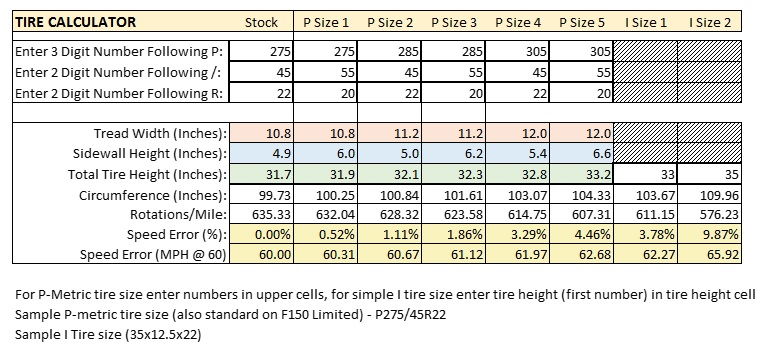
Different front and rear tire pressures may be recommended on some motorcycle models.
Pressure which is indicated on the side of the tire is the maximum allowable for this tires, but this does not mean that it is recommended for your technology.
If you drive aggressively and making fairly sharp turns or your weight with luggage or a partner is close to the limit recommended by the manufacturer Your equipment - tires must be inflated to the maximum value indicated on your tire.
Driving with under-inflated tires is dangerous. Your tires may overheat and lose traction.
Pressure tires should only be checked when the motorcycle is cold or before start off or after stopping when the tires have cooled down and become ambient air temperature.
The information on this website is for information purposes only, while not being a public offer, determined by the provisions of Article 437 (2) of the Civil Code of the Russian Federation.